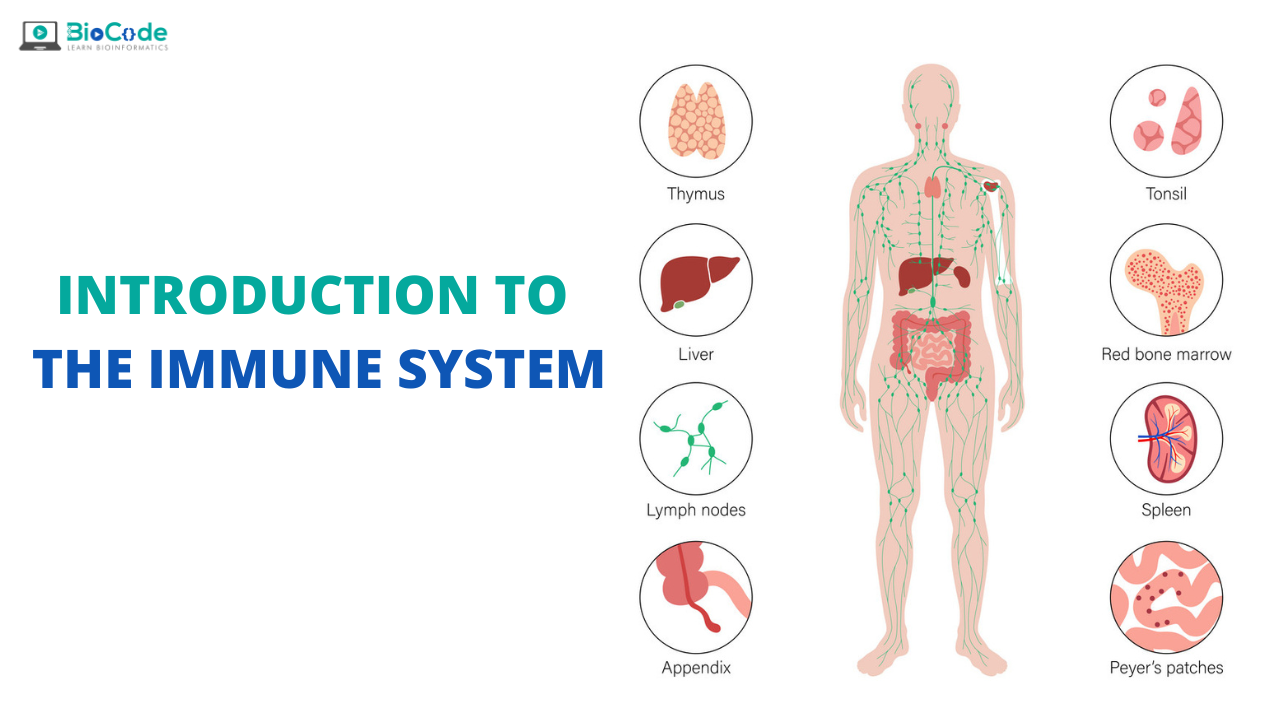Basic Terminologies in Immunology
Immunity
Immunity is defined as resistance to disease, specifically infectious disease.
Immune System
The collection of cells, tissues, and molecules that mediate resistance to infections is called the immune system.
Immune Response
The coordinated reaction of immune cells and molecules to infectious microbes comprises an immune response.
Immunology
Immunology is the study of the immune system, including its responses to microbial pathogens and damaged tissues and its role in disease. The most important physiologic function of the immune system is to prevent or eradicate infections. It prevents the growth of some tumors, and some cancers can be treated by stimulating immune responses against tumor cells. Immune responses also participate in the clearance of dead cells and in initiating tissue repair.
Lymphoid Organs:
- Lymphoid Organs:
These are specialized tissues that provide the anatomic location and microenvironment in which
lymphocytes achieve phenotypic and functional maturity.
- Primary Lymphoid Organs:
It regulates the development of immune cells from immature precursors.
It includes Bone marrow and Thymus.
- Secondary Lymphoid Organs:
It coordinates the encounter of antigen with antigen-specific lymphocytes and their development into effector and memory cells.
Blood vessels and lymphatic systems connect these organs, uniting them into a functional whole.
It includes the spleen, lymph nodes, and specialized sites in the gut and other mucosal tissues.
Hematopoietic Stem Cell (HSC)
All functionally specialized, mature blood cells (red blood cells, granulocytes, macrophages, dendritic cells, and lymphocytes) arise from a single cell type called hematopoietic stem cell.
Hematopoiesis:
The process by which HSCs differentiate into mature blood cells is called hematopoiesis. Two primary lymphoid organs are responsible for the development of stem cells into mature immune cells: The bone marrow, where HSCs reside and give rise to all cell types. The thymus, where T cells complete their maturation.
Innate Immunity
Host defenses which provide immediate protection against microbial invasion are grouped under innate immunity. Innate immunity is also called natural immunity or native immunity. It is always present in healthy individuals (hence the term innate). It blocks the entry of microbes and rapidly eliminate microbes that do succeed in entering host tissues. In innate immunity, the first line of defense is provided by epithelial barriers of the skin and mucosal tissues and by cells and natural antibiotics present in epithelia. All these functions to block the entry of microbes. If microbes do breach epithelia and enter the tissues or circulation, they are attacked by phagocytes and specialized lymphocytes called innate lymphoid cells. These cells include natural killer cells, and several plasma proteins, including the proteins of the complement system.
Principal mechanisms of innate and adaptive immunity:
The mechanisms of innate immunity provide the initial defense against infections. Some mechanisms (e.g., epithelial barriers) prevent infections, and other mechanisms (e.g., phagocytes, natural killer [NK] cells and other innate lymphoid cells [ILCs], the complement system) eliminate microbes. Adaptive immune responses develop later and are mediated by lymphocytes and their products. Antibodies block infections and eliminate microbes, and T lymphocytes eradicate intracellular microbes. The kinetics of the innate and adaptive immune responses are approximations and may vary in different infections.
Adaptive Immunity:
Adaptive immunity develops more slowly and provides more specialized defense against infections. Adaptive immunity, also called specific immunity or acquired immunity. It requires expansion and differentiation of lymphocytes in response to microbes before it can provide effective defense. The adaptive immune system consists of lymphocytes and their products, such as antibodies. Effective for infectious microbes that are pathogenic for humans and may have evolved to resist innate immunity. The cells of adaptive immunity (lymphocytes) express receptors that specifically recognize a much wider variety of molecules produced by microbes as well as noninfectious substances.
TYPES OF ADAPTIVE IMMUNITY:
There are two types of adaptive immunity.
- Humoral immunity
- Cell-mediated immunity
Humoral Immunity
It is mediated by proteins called antibodies, which are produced by cells called B lymphocytes. Secreted antibodies enter the circulation and mucosal fluids, and they neutralize and eliminate microbes and microbial toxins that are present outside host cells, in the body. One of the most important functions of antibodies is to stop microbes that are present at mucosal surfaces and in the blood from gaining access to and colonizing host cells and connective tissues.
Types of adaptive immunity:
In humoral immunity, B lymphocytes secrete antibodies that eliminate extracellular microbes. In cell-mediated immunity, different types of T lymphocytes recruit and activate phagocytes to destroy ingested microbes and kill infected cells.
Cell-mediated Immunity:
Defense against intracellular microbes is called cell-mediated immunity because it is mediated by cells, which are called T lymphocytes. Some T lymphocytes activate phagocytes to destroy microbes that have been ingested by the phagocytes into intracellular vesicles. T lymphocytes also kill any type of host cells that are harboring infectious microbes in the cytoplasm. Most T cells recognize only protein antigens, whereas B cells and antibodies can recognize many different types of molecules, including proteins, carbohydrates, nucleic acids, and lipids.

